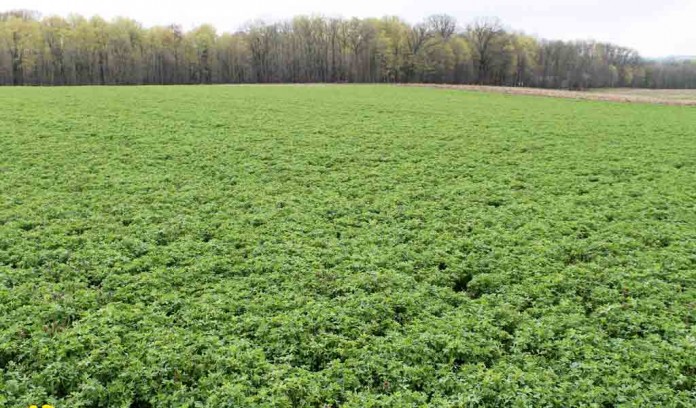By Jamie Hampton
Cover crops can be a beneficial addition to most dairy farms. They can provide additional forage options, reduce erosion and runoff, improve soil health and allow for more time to apply manure.
Using short-season forages can provide excellent quality forage on dairy farms to supplement corn silage and perennial forages, while also increasing land-use efficiency, according to Ohio State University’s Mark Sulc, forage agronomist and Bill Weiss, dairy nutritionist.
Have a plan
Cover crops, like any crop, require management and should not be taken on without having a good reason and a plan. Before you start any cover crop program, you should know your resource concern, or why you are doing it.
There are several resources available online to help guide you in making management decisions. The Midwest Cover Crop Council has a great tool for cover crop selection that can be found at https://mccc.msu.edu/. You can also reach out to a cover crop community that is willing to discuss your plans with you. You can find some of these groups through your local extension office.
Planting
Cover crops are usually planted in the summer and early fall, and follow a cash crop. The goal is to have a crop green and growing to capture carbon from the air and to hold nutrients in the soil that may be subject to leaching or runoff. Another great thing about cover crops is that they are a wonderful tool for erosion control, helping to decrease the loss of precious topsoil.
In a dairy operation, cover crops can be planted in mid-late summer. Mid-summer plantings will be in late August to early September. Late summer plantings will run from late September through mid-October. Although brassicas and legumes are a huge part of the cover crop system, the most popular species for dairy operations are cereal grains due to their ability to be grazed or mechanically harvested as high-quality forage.
In areas where wheat harvest is completed or early corn silage has been harvested, plantings of oats, spring triticale and ryegrass can produce a late fall crop for grazing or green chopping. Cereal grains following corn will most likely not need any additional nitrogen fertilizer because it will scavenge what was left by the corn crop.
When corn silage harvest is complete in late September into early October, cover crops or other forage options can include winter wheat, winter triticale and winter rye. These forages will be harvested the following spring. The rye will mature earlier in the spring, while the wheat and triticale will mature later in the spring.
Harvesting
Chopping and ensiling supplemental forages is the best mechanical harvest option. Dry baling is difficult because cereal grains dry slower than grass hay and early spring weather rarely includes conditions suitable for dry hay harvest.
For late-planted forages, grazing will provide the most cost-efficient use of the crop. Strip grazing can provide a winter grazing option for cattle. Oats don’t die until temperatures have been in the 20s for several hours, meaning that in Ohio you could have a green crop well into winter.
Cover cropping provides other benefits to the dairy operation. Not only can you add a forage to your rotation, but you also are adding a best management practice for manure application. In 2014, House Bill 150 created special regulations for manure application in the western basin of Lake Erie. However, when applying to a growing crop (including cover crops) some of these restrictions do not apply. While these regulations impact this geographic area, dairy farmers across Ohio should be aware of their impacts on fellow dairy producers.
Cover crops can provide a source of management for manure by capturing nutrients and preventing them from leaching into water sources or volatilizing into the air. Research shows that cereal rye can capture and hold 25 to 50 pounds of organic nitrogen per acre.
Using cover crops extends the time available to producers to apply manure later into the year. If you are going to be applying manure it is highly recommended that you are up to date on all the regulations in your area.
(Jamie Hampton is an agriculture and natural resources OSU extension educator in Auglaize County. She can be reached at hampton.297@osu.edu or 419-910-6062.)













